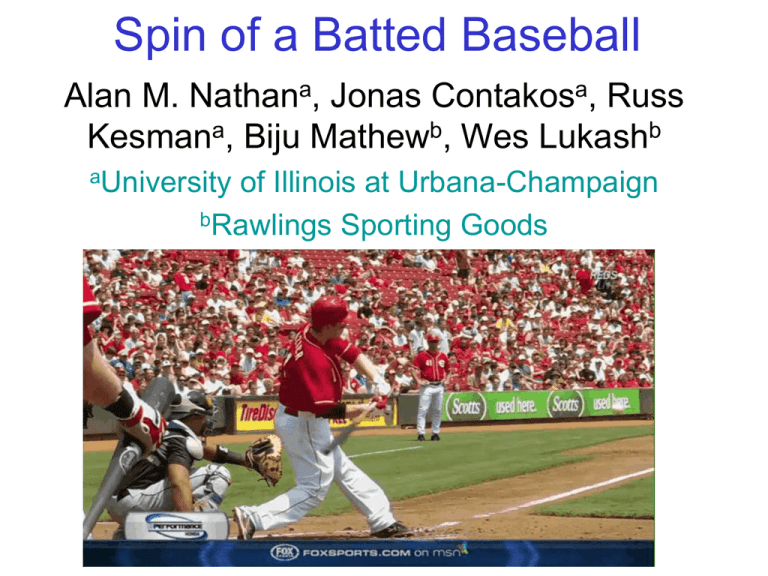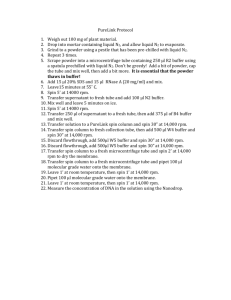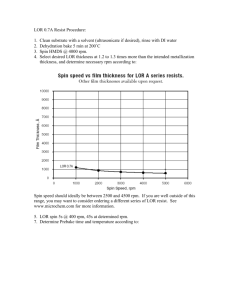Spin of a Batted Baseball - The Physics of Baseball
advertisement

Spin of a Batted Baseball Alan M. Nathana, Jonas Contakosa, Russ Kesmana, Biju Mathewb, Wes Lukashb aUniversity of Illinois at Urbana-Champaign bRawlings Sporting Goods Spin Affects Batted Ball Trajectories Familiar Effects: • Backspin keeps fly ball in air longer FM v ω – greater distance • Topspin makes line drives nosedive – and leads to grounders with tricky bounces • Sidespin makes ball slice or hook toward foul pole • Backspin sometimes leads to “paradoxical popups” Fd mg 2000 fps Mechanism for Batted Ball Spin vTf -rωf ex = vTi -rωi v normal force friction • Rolling: ex=0 • Sliding: ex<0 • Gripping: ex>0 •Superball: ex ~ 0.8 •“usual” assumption ex=0 •Low speed: ex~0.16 Scattering Geometry Measure v1, v2, 1, 2, Infer • v1: 85-120 mph • 1: 0, 1000-3000 rpm Normalized Final Spin vs. Incident Angle to Normal () Incident backspin Zero incident spin Incident topspin Final spins depend on , ~independent of initial spin Final vs. Initial Tangential Speed Incident backspin Zero incident spin Incident topspin Slope = -ex • Data consistent with ex=0.3 (gripping) • Data inconsistent with ex=0 (rolling) • For >400, “gross slip” ensues Angular Momentum Conservation about Contact Point CoF and Ratio of Tangential to Normal Impulse Data consistent with very low CoF, ~0.15 Summary of Conclusions • Final spin for given vTi nearly independent of initial spin • Data consistent with ex=0.30, implying considerable “overspin” • Data consistent with angular momentum conservation • Data consistent with very low CoF – puzzling! …and finally v0 = 96.6 mph, = 30.5o, R = 374 ft b = 3300 rpm s = 425 rpm The Grip Doesn’t Matter!











